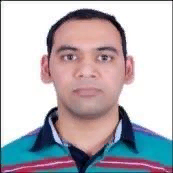
Sankalp Shukla
Work place: Indira Gandhi Engineering College, Sagar, Madhya Pradesh, 470021, India
E-mail: sankalp2shukla@yahoo.in
Website: https://orcid.org/0000-0001-8734-0478
Research Interests: Image and Sound Processing, Image Manipulation, Image Compression, Computer systems and computational processes, Signal Processing, Image Processing
Biography
Sankalp Shukla completed his Bachelors of Engineering in Electronics & Communication Engineering from GGITS, Jabalpur and his Masters in Communication Engineering from NITK Surathkal. He is currently pursuing working as an Assistant Professor in Department of Electronics & Communication Engineering at Indira Gandhi Government Engineering College, Sagar (M.P.). His research interests include Audio and Image Signal Processing.
Author Articles
A Comparative Analysis of Lossless Compression Algorithms on Uniformly Quantized Audio Signals
By Sankalp Shukla Ritu Gupta Dheeraj Singh Rajput Yashwant Goswami Vikash Sharma
DOI: https://doi.org/10.5815/ijigsp.2022.06.05, Pub. Date: 8 Dec. 2022
This paper analyses the performance of various lossless compression algorithms employed on uniformly quantized audio signals. The purpose of this study is to enlighten a new way of audio signal compression using lossless compression algorithms. The audio signal is first transformed into text by employing uniform quantization with different step sizes. This text is then compressed using lossless compression algorithms which include Run length encoding (RLE), Huffman coding, Arithmetic coding and Lempel-Ziv-Welch (LZW) coding. The performance of various lossless compression algorithms is analyzed based on mainly four parameters, viz., compression ratio, signal-to-noise ratio (SNR), compression time and decompression time. The analysis of the aforementioned parameters has been carried out after uniformly quantizing the audio files using different step sizes. The study exhibits that the LZW coding can be a potential alternative to the MP3 lossy audio compression algorithm to compress audio signals effectively.
[...] Read more.Other Articles
Subscribe to receive issue release notifications and newsletters from MECS Press journals